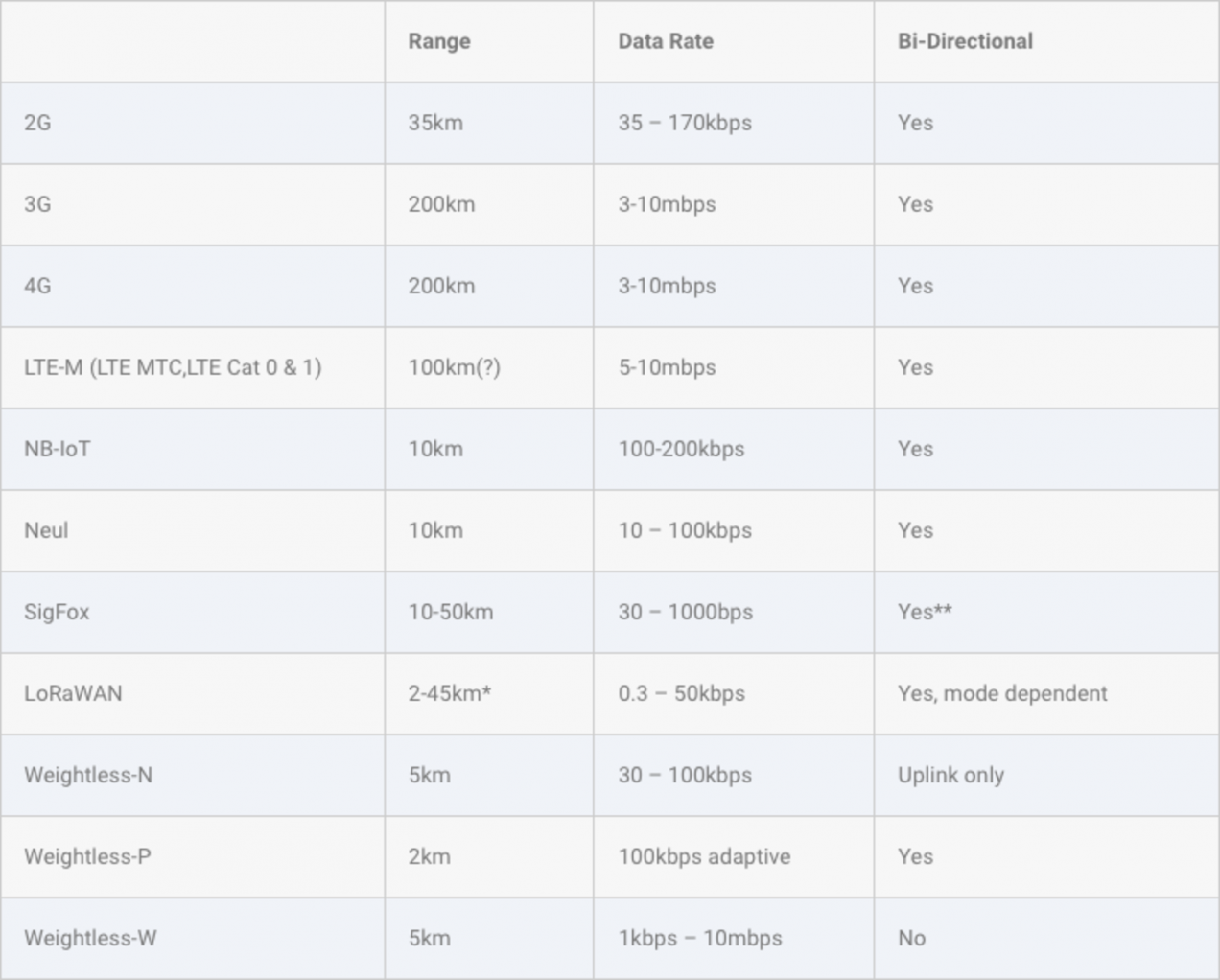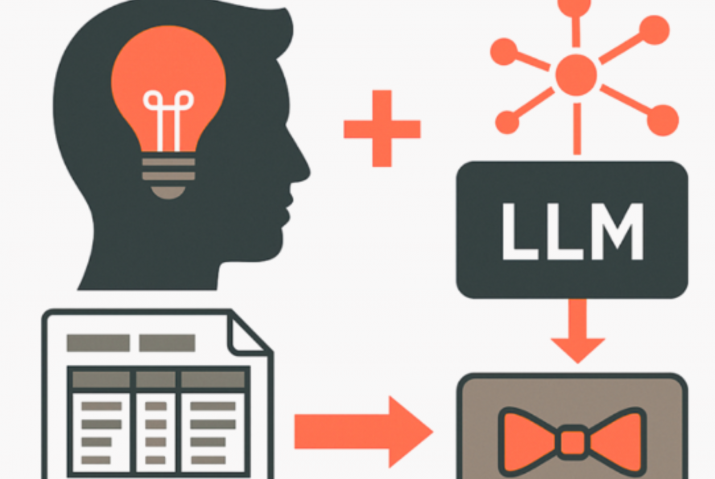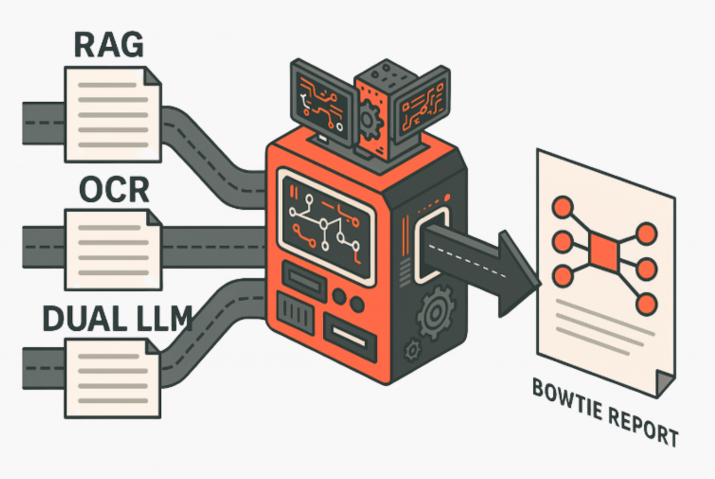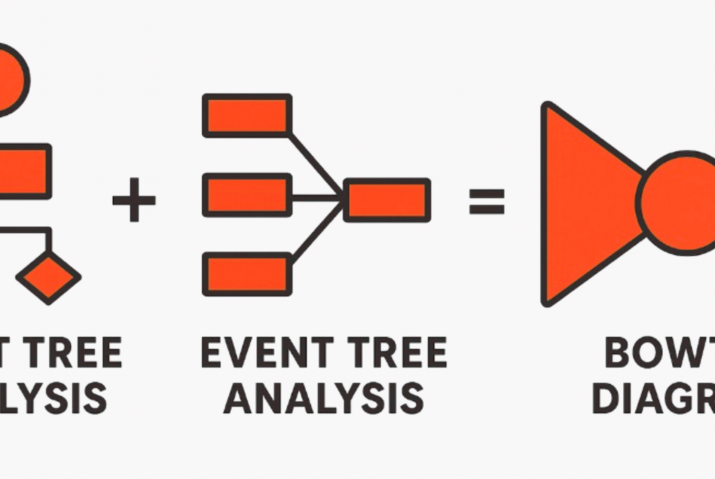
A crucial aspect in IIoT applications is the communication layer. This layer is responsible for relaying sensor values from the field to northbound processing of this data and the southbound control.
In our previous blog, we concluded that IIoT is reality, but headaches are ahead choosing the right protocol and communications provider, especially when your IIoT solution requires long-range support, will be deployed in multiple countries and needs cross border coverage.
Protocols, protocols, protocols…
The myriad of protocols in IoT land is still growing and can truly be overwhelming. In the table below, I have limited the protocols listed to only those that support long-range. Next to this, the table shows data rates and bi-directional capability, these are important qualifiers for typical IIoT solutions and may help you choose the right protocol … but continue reading!

*): Depending on the placement of the router (urban/suburban/rural), obstacles and weather conditions.
**): Requires high network density
What Protocol … No Sorry What Provider .. or Protocol!?
The vast majority of today’s M2M communication relies on 2G and 3G networks. These networks reliably provide, relatively low-cost, long range and border stretching networks for IIoT applications. They are offered by a wide variety of providers and support roaming. A truly excellent choice for your IIoT solution … were it not that 2G/3G networks are expected to disappear in the next 5 years. This is where the headache starts … as today no cross-border roaming IIoT provider is out there supporting a protocol with an expected useful lifetime equal to a smartphone.
You could of course develop your IIoT solution – sensors, middleware, processing nodes et cetera – to support multiple protocols but this is unpractical and costly.
When we limit ourselves to an IIoT deployment that requires long range connectivity, is low- cost, will be deployed in multiple countries and will be available after 2020 than, today, we can choose between:
- SigFox: A protocol with country coverage in certain EU countries and countries under rollout such as Brazil, Germany, UK and the US
- LoRa: A protocol offered by multiple providers. Some country covering networks are available today and some network providers cover regions or cities
SigFox
SigFox is available in countries where rollout is requested (chicken and egg). Today roaming is not supported, but besides this all data goes over SigFox managed servers(!). The latter something that certain companies will not want.
LoRaWAN
LoRaWAN is growing in popularity, LoRa networks are predominantly rolled out by the NTCs – National Telephone Companies – but you also see new communication providers popping up such as DIGIMONDO in Germany, Wireless Things in Belgium et cetera. This because there are no frequency auctions for LoRa. So far so good, but LoRa also has a small caveat: roaming is under development – expected this year.
Conclusion
With new communication providers popping up out of nowhere and NTCs pushing rollouts of LoRa like there is no tomorrow there is a lot of turbulence in the IIoT communications space.
Today no cross-border roaming IIoT provider is out there supporting a protocol with a ‘long’ lifespan. Today LoRa is, in Europe, one of the best alternatives to focus on.
Closing Notes
In this post I have not taken LTE-M into consideration as it is becoming available this year.
LTE-M rollout will likely be fast as it can utilize existing mobile phone infrastructures. I recommend you to read the Ericsson White Paper: Cellular networks for massive IoT and to keep an eye on this space. But also don’t lose track on Ingenu (promising), NWAVE and NB-IoT. Some expect that NB-IoT will ‘crush’ LoRa and SigFox furthering the headache.
Weightless was left out of the consideration in this article as it is only available in a few different European cities and is more mid than long range .. but hey it may well suite your IIoT needs!
Due to the turbulence and changes in communications land this article very likely needs to be revisited in 3-to-6 months from now.
Finally: If you are looking to set-up a private LoRaWAN network, or wanting to play around with LoRa possibilities there is not much stopping you. For approximately 280$ you can have your own LoRa network – have a look at TheThingsNetwork.
UReason
UReason has been at the forefront of IoT/IoE, reasoning over real-time streaming data and events in the manufacturing industry and telecom. We apply an ensemble of techniques – best fitting the requirements – and a wealth of knowledge focused on providing a tailored response to the environment of our customers.
Our capabilities in the Industrial Internet of Things field include:
- Feasibility studies and Proof of Concepts including hardware prototyping and field tests
- Support and roll-out of IIoT solutions in Operational Safety and Predictive Maintenance
- Recommendations for human-cyber physical systems, augmented reality and Internet of Things technologies
- Support in Machine Learning and Big-Data initiatives supporting IIoT applications
If you want to find out how UReason can help you in improving your asset maintenance, feel free to download our ebook below.
APM software e-book
Download our e-book to learn what UReason can do for you, find the unique functionalities of our next-gen APM software, look at the big data analytics framework and learn the different asset analysis models.








